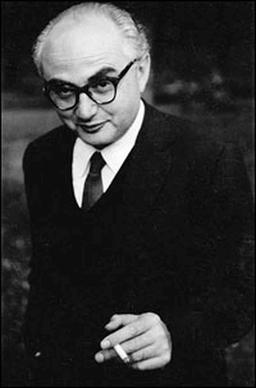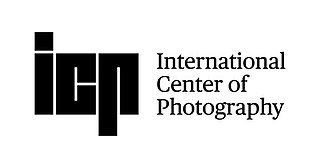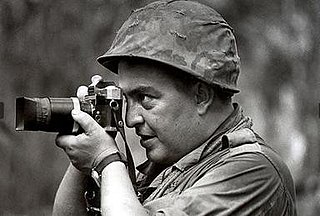Related Research Articles

Robert Capa was a Hungarian-American war photographer and photojournalist. He is considered by some to be the greatest combat and adventure photographer in history.

Photojournalism is journalism that uses images to tell a news story. It usually only refers to still images, but can also refer to video used in broadcast journalism. Photojournalism is distinguished from other close branches of photography by having a rigid ethical framework which demands an honest and impartial approach that tells a story in strictly journalistic terms. Photojournalists contribute to the news media, and help communities connect with one other. They must be well-informed and knowledgeable, and are able to deliver news in a creative manner that is both informative and entertaining.

Alfred Eisenstaedt was a German-born American photographer and photojournalist. He began his career in Germany prior to World War II but achieved prominence as a staff photographer for Life magazine after moving to the U.S. Life featured more than 90 of his pictures on its covers, and more than 2,500 of his photo stories were published.

David Seymour, or Chim, was a Polish photographer and photojournalist.

The International Center of Photography (ICP) is a photography museum and school at 79 Essex Street on the Lower East Side of Manhattan in New York City. ICP's photographic collection, reading room, and archives are at Mana Contemporary in Jersey City, New Jersey. The organization was founded by Cornell Capa in 1974. It is located at 79 Essex Street, within the Lower East Side.

Gerta Pohorylle, known professionally as Gerda Taro, was a German war photographer active during the Spanish Civil War. She is regarded as the first female photojournalist to have died while covering the frontline in a war.
Dirck Storm Halstead was an American photojournalist. He was editor and publisher of The Digital Journalist, an online photojournalism magazine.

Cornell Capa was a Hungarian-American photographer, member of Magnum Photos, photo curator, and the younger brother of photo-journalist and war photographer Robert Capa. Graduating from Imre Madách Gymnasium in Budapest, he initially intended to study medicine, but instead joined his brother in Paris to pursue photography. Cornell was an ambitious photo enthusiast who founded the International Center of Photography in New York in 1974 with help from Micha Bar-Am after a stint of working for both Life magazine and Magnum Photos.

Ralph Theodore Morse was a career staff photographer for Life magazine. He photographed some of the most widely seen pictures of World War II, the United States space program, and sports events, and was celebrated for his multiple-exposure photographs. Morse's success as an improviser led to his being considered Life magazine's specialist in technical photography. Former managing editor George P. Hunt declared that "If [the] equipment he needed didn't exist, [Morse] built it."

Maria Eisner was an Italian-American photographer, photo editor and photo agent. She was one of the founders of Magnum Photos, and the first head of its Paris office.

Horst Faas was a German photo-journalist and two-time Pulitzer Prize winner. He is best known for his images of the Vietnam War.

John Stanmeyer, is an American photojournalist based in Otis, Massachusetts. He is one of the founders of VII Photo Agency. Stanmeyer has received the World Press Photo of the Year, Robert Capa Gold Medal, Magazine Photographer of the Year from Pictures of the Year International, and a National Magazine Award for Photojournalism.
Stefan Lorant was a pioneering Hungarian-American filmmaker, photojournalist, and author.
Yannis Kontos is a Greek documentary photographer, professor of photography and commercial photographer. He has covered major events for over a decade in more than 50 countries. His work has been published in newspapers, magazines, and books.
John Godfrey Morris was an American picture editor, author and journalist, and an important figure in the history of photojournalism.

The Magnificent Eleven are a group of photos of D-Day taken by war photographer Robert Capa. Capa was with one of the earliest waves of troops landing on the American invasion beach, Omaha Beach. Capa stated that while under fire, he took 106 pictures, all but eleven of which were destroyed in a processing accident in the Life magazine photo lab in London, although the accidental loss of the remaining negatives has been disputed. The surviving photos have since been called the Magnificent Eleven. The pictures have been widely celebrated, and Steven Spielberg is said to have been inspired by them when filming Saving Private Ryan.

Lawrence Fried was an American photo-journalist. He was born to first-generation Jewish Hungarian and Russian parents in New York, N. Y. Fried's work appeared in Newsweek, The Saturday Evening Post, The New York Times, Vogue, Collier's, and Parade Magazine.[1] with over 70 covers for Newsweek [2]. He was the recipient of the Photographer of the Year award by the Overseas Press Club, the Outstanding Service to ASMP award and the Benjamin Franklin Award [3].
Jerry Cooke was an American photojournalist from the 1940s-1990s.

Ed Feingersh (1925–1961) studied photography under Alexey Brodovitch at the New School of Social Research. He later worked as a photojournalist for the Pix Publishing agency. His talent for available light photography under seemingly impossible conditions was well recognised. His pictures of Marilyn Monroe are his best known, but he was a prolific photojournalist throughout the 1950s. Two of his moody photographs of jazz performers were selected by Edward Steichen for MoMA’s world-touring The Family of Man exhibition.
Eileen Darby Lester was an American photographer of Broadway theatre productions.
References
- ↑ "Leon started his career as a picture editor for the Associated Press office in Berlin. He was cofounder of Pix Publishing in New York, an independent agency mainly supplying photographs to magazines and newspapers, it was dissolved in 1969." 'Obituary Leon Daniel,' The New York Times, December 31, 1974.
- ↑ Estelle Blaschke, Photography and the Commodification of Images: from the Bettmann Archive to Corbis (1924–2010), thèse de doctorat de l'EHESS, sous la direction d'André Gunthert et Michel Poivert, 2011, 280 p.
- ↑ Martin, Douglas (April 13, 2004). "Eileen Darby, 87, Photographer Of Noted Broadway Shows". The New York Times. ISSN 0362-4331 . Retrieved April 13, 2023.
- ↑ "Eileen Darby Lester, 87". Chicago Tribune. Retrieved April 13, 2023.
- ↑ Archives, L. A. Times (April 21, 2004). "Eileen Darby Lester, 87; Prolific Photographer of Broadway's Stars". Los Angeles Times. Retrieved April 13, 2023.
- ↑ Darby, Eileen; Henderson, Mary C., 1928– (2005), Stars on stage : Eileen Darby & Broadway's Golden Age : photographs 1940–1964 (1st ed.), Bulfinch Press, ISBN 978-0-8212-2897-5
{{citation}}: CS1 maint: multiple names: authors list (link) CS1 maint: numeric names: authors list (link)